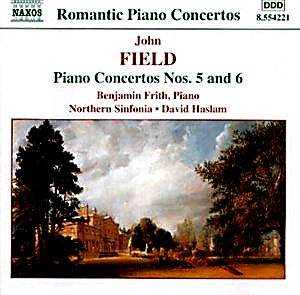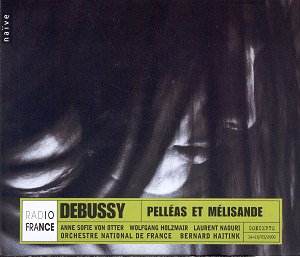 Composer: John Field
Composer: John Field
Works: Piano Concertos Nos. 5 and 6
Performers: Benjamin Frith, piano; Northern Sinfonia; David Haslam, conductor
Recording: Recorded in the Jubilee Theatre, Nicholas Hospital, Newcastle, UK, January 1997
Label: NAXOS
John Field, often regarded as the father of the Nocturne, occupies a peculiar but pivotal position in the classical canon. His Piano Concertos Nos. 5 and 6, composed between 1831 and 1837, reflect a transitional moment in early Romantic music, where the elegance of Classical form meets the burgeoning expressiveness that would characterize the works of Chopin, Liszt, and Mendelssohn. While Field’s contributions may not have stirred the tempest of musical upheaval, his delicate sensitivity and lyrical grace opened new pathways for pianistic expression that resonate through the works of his successors.
Benjamin Frith’s performance in this recording is a testament to the nuanced beauty inherent in these concertos. From the outset, Frith’s touch is characterized by a remarkable blend of delicacy and strength, rendering the intricate filigree of the piano writing with both clarity and emotional depth. The first movement of Concerto No. 5 introduces a shimmering dialogue between the piano and the orchestra, where Frith’s deft phrasing and dynamic contrasts breathe life into the melodic lines. His ability to maintain a lyrical singing quality while navigating the more virtuosic passages is particularly commendable, avoiding mere display for display’s sake. This is exemplified in the second movement of Concerto No. 6, where the piano’s introspective lines are juxtaposed with a lush orchestral backdrop, revealing the depth of Field’s melodic inventiveness.
The Northern Sinfonia under David Haslam provides a supportive yet vibrant accompaniment. Their playing is marked by a keen attentiveness to the soloist, establishing a rapport that allows for seamless interplay. The orchestral textures are transparent, ensuring that the piano remains the focal point without being overshadowed. The balance achieved in the recording is commendable, with the engineering capturing the rich sonorities of both the piano and the ensemble. Each instrumental line is articulated with precision, enhancing the clarity of Field’s intricate counterpoint, particularly in the lively finale of the fifth concerto, which bursts forth with a jubilant energy.
When comparing this recording to other interpretations, such as those by soloists like Stephen Hough or the more recent recordings by the likes of Pascal Rogé, Frith’s approach stands out for its lyrical warmth and attention to detail. While Hough often emphasizes the virtuosic aspects, Frith brings a more contemplative reading, allowing the emotive qualities of the music to shine through without succumbing to hyperbole. This balance is particularly effective in the slow movements, where the emotional weight of Field’s writing is given ample room to unfold.
The technical execution displayed by Frith is exemplary; his command of the instrument is evident in the precision of his runs and the subtlety of his pedaling. The recording captures the resonances of the piano beautifully, allowing listeners to appreciate the tonal palette Frith employs. The sound is both rich and clear, with a resonance that enhances the impressionistic qualities of Field’s music. The engineering team deserves commendation for their work in creating an intimate listening experience that draws the audience into the performance.
This recording of Field’s Piano Concertos Nos. 5 and 6 serves not merely as an archival document but as a vibrant celebration of a composer whose influence reverberates through the annals of piano music. Frith’s thoughtful interpretation, coupled with the Northern Sinfonia’s adept accompaniment, offers a compelling glimpse into Field’s world, where elegance and emotion are intricately woven together. It stands as a vital addition to the catalog of early Romantic piano concertos, deserving of attention from both connoisseurs and those newly exploring this charming repertoire.



